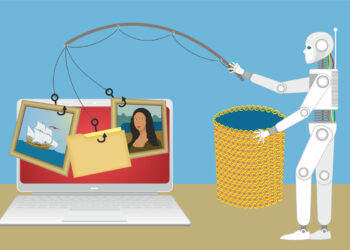
- Image via Wikipedia
It’s almost too easy to argue that scholarly publishers and librarians have sold themselves a load of bad ideas — author-pays journals and institutional repositories that invite over-publication and proliferation of bad copies of research findings, in addition to compromising objectivity. But perhaps the greatest bad idea we’ve sold ourselves is that the subscription model is dead.
Excuse me? Paid for your cell phone, cable, Netflix, and broadband subscriptions lately?
In a recent article in the New York Times, the benefits of the subscription model are explored, painfully starting with the framework that publishers once embraced it. The article does a nice job of objectively listing the benefits to businesses the subscription model brings, many of which stabilize finances so that publishers can cultivate long-term growth and withstand a periodic downturn.
Interestingly, the notion of “planned obsolescence” is lumped in as a subscription model choice, meaning if you buy a top-of-the-line car very few years, you are opting to “subscribe” more intensely to the technology genre than someone who buys a utilitarian vehicle and runs it into the ground. It’s what the author of this piece calls “the subscription mentality,” which he also uses to view the housing market:
Some of the madness of the recent housing bubble can be blamed on an extension of the subscription mentality. What exactly were homeowners doing when they bought a house for little or no money down with the intention of holding it for two or three years before upgrading to a better home? They were treating an investment in real estate as though it were just another consumable product, to be disposed of with the same emotion one shows in recycling a monthly magazine.
People who thought of their home that way got away with it only as long as the home’s value grew enough to let them sell and trade up.
As the people responsible for our information industry, it’s worth remembering that the subscription model isn’t dead, nor is the subscription mentality. Institutional site licenses are actually subscriptions of a certain type, ones that bundle the cost and benefits differently.
At least, that’s if you subscribe to this type of thinking.
Discussion
4 Thoughts on "The Subscription Model Lives and Thrives"
Subscriptions show up in lots of places. Not just performance series subscriptions, er, seasons. I bought a new electric razor and electric toothbrush recently on Amazon, and Amazon offered me “timed refills” (aka a subscription) for cleaning supplies and new brushes. I also bought a new trash can online (not from Amazon, from SimpleHuman’s web site) and didn’t get offered a ‘subscription’ for can liners.
In all these cases, I think a subscription is a convenience, an alternative to remembering to get more “just in time”.
Funny you used Netflix for the image here, as their CEO just declared the death of DVDs in the next two years, although they’re hoping to have other subscription mechanisms in place by then.
This is an insightful post though–subscription is a superb business model at the moment. It’s a business model that people understand and are willing to participate in for many products. We’ve taken this approach with Cold Spring Harbor Protocols, as an attempt to translate our print laboratory manual publishing program (which dates back to 1972) into the modern online world. The print manuals continue to sell well, but we’ve found that younger scientists are less and less aware of their existence, preferring instead to look online for instructions on laboratory methods. Moving our print material into an online journal/database (along with newly submitted and commissioned methods) makes it findable and accessible for a wider audience and provides a sustainable revenue stream for the program should print sales ever tail off. It’s not as flashy or groundbreaking a concept as many new ventures, but it is proving to be a success, both financially and in acceptance by the community.
Great point, David, about the DVDs. Subscriptions aren’t tied to the past, to any medium, but to convenience, inertia, and sustainability. I think people like having things they like survive. Subscribers have jobs, and they know that stuff costs money. We swallowed the “information wants to be free” crowds’ fairy tale for too long. Remember, the other part of the quote is, “information wants to be expensive.” It was meant to show an internal conflict, and it surely captures it. We just sound-bit our way into forgetting the counterpoint.
![Reblog this post [with Zemanta]](http://img.zemanta.com/reblog_e.png?x-id=5523ff9b-b100-469d-ab3a-de11fef04116)


